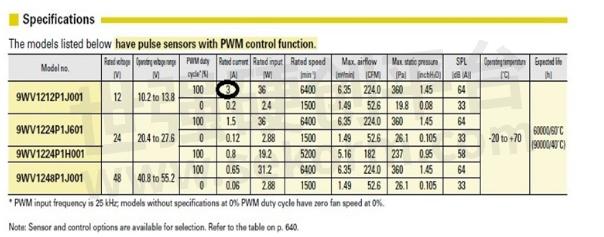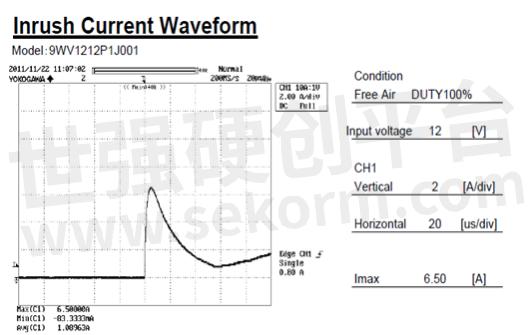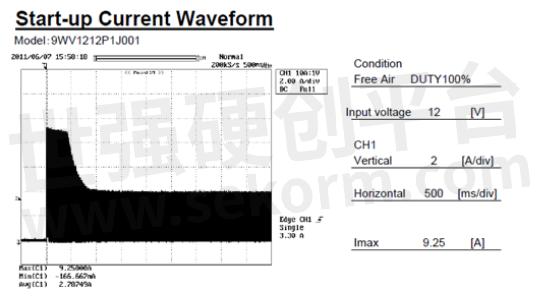Current Specifications of DC Cooling Fans You Need To Know

Demystifying Power Supply Requirements for DC Fans: From Nominal to Startup Currents
When designing a system, it’s crucial to know the power supply requirements, particularly the worst-case current rating for the DC fans. This article provides an in-depth understanding of what factors need to be taken into consideration.
What is the Nominal Rated Current?
All DC fan manufacturers provide a nominal rated current, which is based on the fan operating at full speed in an open-air test bench condition. For instance, one of our models shown below has a nominal current rating of 3A at 100% PWM duty cycle on an open test bench.
However, this doesn’t represent the worst-case maximum current value. DC fans, being inductive loads, have a startup current (not to be confused with inrush current) that must be factored in.

Inrush Current
Inrush current is a brief current spike that occurs when power is applied to the fan to charge up all the components (primarily capacitors) on the PC board. In the graph below, we see an Imax of 6.5 A but only for a brief time of <20μs. This short spike generally has a minimal impact on the power supply supporting the fan and can often be disregarded.

Startup Current
On the other hand, the startup current lasts much longer as it’s needed to overcome the inertia of the fan’s rotor when first powered up. If the fan doesn’t receive the full startup current, it will fail to reach maximum speed and will shut down the motor. Below, we see an Imax startup current of 9.25A for almost 500ms. This has a greater impact on the power demanded by your power supply and must be considered.

The startup current issue is compounded if you have multiple fans turning on simultaneously, requiring a much higher rated power supply. For example, for a two-fan system, if both fans were turned on at the same time, they would require 9.25Ax2=18.5A for 500ms. One way to mitigate this issue and use a smaller rated power supply is to stagger or delay powering up the fans so that the second fan powers up after the first fan has reached full speed. This would then only require 3A+9.25A=12.25A for 500ms and then be reduced to 3Ax2=6A once both fans reached full speed.
Conclusion
In conclusion, the published nominal current rating of the fan is based on operating at full speed and measured under open-air test bench conditions. The inrush current occurs when power is applied to the fan to charge up all the components and is a very short spike.
The start-up current for all DC Cooling Fans must be considered to ensure your power supply is rated high enough to handle the current.
- +1 Like
- Add to Favorites
Recommend
- Trouble With Electromagnetic Environments? SANYO DENKI’s Expert EMC Solutions Help
- New Performance Benchmark Set By The 9RA Series Cooling Fans of SANYO DENKI
- SANYO DENKI‘s Successful Cooling Solution For EV Charger With Splash Proof Fans
- Securing Critical Data: A Design House‘s UPS Solution from SANYO DENKI
- SANYO DENKI AMERICA Announces Expansion of Assembly Factory in Torrance, California
- SANYO DENKI Launches 40×40×20mm and 40×40×28mm Splash Proof Fans with the Highest Airflow of 0.38m³/min and Static Pressure of 210Pa Max
- Boost Reliability with SANYO DENKI SANUPS E33A and E23A Parallel Processing UPS
- STO (Safe Torque Off): Maximizing Safety in SANYO DENKI’s Servo Systems
This document is provided by Sekorm Platform for VIP exclusive service. The copyright is owned by Sekorm. Without authorization, any medias, websites or individual are not allowed to reprint. When authorizing the reprint, the link of www.sekorm.com must be indicated.





























































































































































































































































































































































































































































































































































































































































































































































































































































































